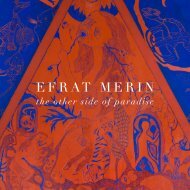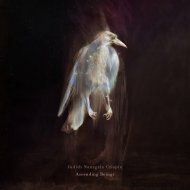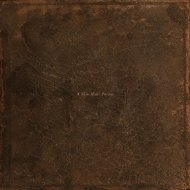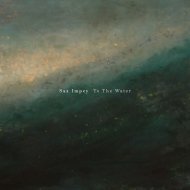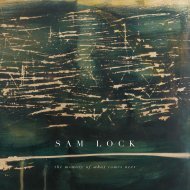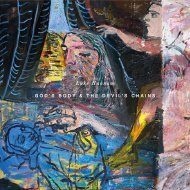Trevor Bell ' Beyond the Edge
Publication for the solo exhibition 'Beyond the Edge' by Trevor Bell at Anima-Mundi, St. Ives
Publication for the solo exhibition 'Beyond the Edge' by Trevor Bell at Anima-Mundi, St. Ives
Create successful ePaper yourself
Turn your PDF publications into a flip-book with our unique Google optimized e-Paper software.
T R E V O R B E L L
B E Y O N D T H E E D G E
<strong>Trevor</strong> <strong>Bell</strong>’s latest works may be created from<br />
canvas and paint, but to describe <strong>the</strong>m as<br />
paintings would be wrong. They are not intended<br />
to be representations of something else, nor are<br />
<strong>the</strong>y self reflective works of ‘art for art’s sake’.<br />
Instead, <strong>the</strong>y are self-contained objects, moments<br />
of wonder that <strong>Bell</strong> has found and brought into<br />
<strong>the</strong> light. They hover on <strong>the</strong> wall, differently<br />
sized and shaped canvases grouped toge<strong>the</strong>r;<br />
colour propping up colour, <strong>the</strong>ir dynamic forms<br />
held in delicate tension or balanced with a gravity<br />
defying lightness.<br />
Now eighty five,<strong>Trevor</strong> <strong>Bell</strong> is still pushing <strong>the</strong><br />
boundaries, his new works taking us beyond<br />
<strong>the</strong> edge into a new territory. Colour no longer<br />
bursts out of <strong>the</strong> canvas to saturate <strong>the</strong> world and<br />
engulf <strong>the</strong> viewer. It is no longer <strong>the</strong>re to prompt<br />
memories and demand an emotional response.<br />
Instead, <strong>Bell</strong> asks us to consider <strong>the</strong> weight<br />
of colour. He explores it as noun ra<strong>the</strong>r than<br />
adjective, something of mass and substance. It<br />
props up and balances; it serves as weight and<br />
counterweight, it asks questions of near and far.<br />
Associations with <strong>the</strong> landscape still linger in<br />
shades of purple, blue and sand, but <strong>the</strong>y have<br />
become secondary in <strong>the</strong> balancing act that colour<br />
now performs.<br />
Vibrant blacks dominate <strong>the</strong>se paintings, a<br />
presence bursting into <strong>the</strong> world through a void<br />
of white. These blacks exert a gravitational pull<br />
that holds each painting down. However, look<br />
into <strong>the</strong>se black holes and you become lost;<br />
freed from edges and boundaries, floating in <strong>the</strong><br />
weightless vacuum of seemingly limitless space. It<br />
is <strong>the</strong>n we notice <strong>the</strong> white, no longer an area of<br />
emptiness, but something of substance, a solid<br />
ground holding <strong>the</strong>se bottomless pools. This<br />
constantly shifting tension between weight and<br />
weightlessness is reflected in <strong>the</strong> forms of<br />
<strong>the</strong>se new works – fulcrums holding shapes of<br />
apparently different size in perfect balance,<br />
hinting at <strong>the</strong> optical illusion imposed by distance,<br />
where equivalence becomes difference and large<br />
becomes small.<br />
These jagged black forms are not just about<br />
weight, however, but also about <strong>the</strong> process of<br />
emergence, <strong>the</strong> transition between being and<br />
nothingness, formlessness and form. Like <strong>the</strong><br />
related series of Dance drawings, <strong>the</strong>y serve as a<br />
2
choreographic notation, charting <strong>the</strong> progress of<br />
a line of energy as it is released into <strong>the</strong> world to<br />
become form.<br />
There is a zen-like simplicity to <strong>Bell</strong>’s mark<br />
making, a rootedness in <strong>the</strong> present that is<br />
unrelated to anything outside itself. Each mark<br />
is like <strong>the</strong> duration of a breath - a self contained<br />
moment, yet dependent upon everything around<br />
it. These vivid marks trace <strong>the</strong> trajectory of <strong>Bell</strong>’s<br />
arm as it moves across <strong>the</strong> surface of paper<br />
and canvas, <strong>the</strong> thinning paint and ragged edges<br />
reflecting <strong>the</strong> slowly ebbing flow of pigment<br />
through <strong>the</strong> bristles of his brush.<br />
moment between inhalation and exhalation, <strong>the</strong><br />
unnoticed tension that separates one thing from<br />
ano<strong>the</strong>r. These self contained objects are not<br />
about anything, <strong>the</strong>y don’t refer to anything,<br />
<strong>the</strong>y are not subject to anything. They are. They<br />
are celebrations of existence and being, that<br />
take us beyond <strong>the</strong> edge of form into <strong>the</strong> space<br />
of becoming.<br />
Richard Davey, 2016<br />
Yet <strong>the</strong>se new works are more than <strong>the</strong> marks<br />
that lie within <strong>the</strong> contours of <strong>the</strong> canvas. Around<br />
<strong>the</strong>ir edges are subtler lines – shadow-lines and<br />
imperceptible highlights that both contain and<br />
dissolve <strong>the</strong>se active contours. They form a<br />
shifting penumbra that animates and activates<br />
<strong>the</strong>se works – an edge, yet not an edge, holding<br />
and caressing each work, allowing it to dissolve<br />
into <strong>the</strong> space beyond.<br />
What <strong>Bell</strong> has caught in <strong>the</strong>se new works is that<br />
Richard Davey is an internationally published<br />
author, curator and member of <strong>the</strong> International<br />
‘Association of Art Critics’. He is a judge of <strong>the</strong><br />
John Moores Painting Prize 2016 and recently<br />
wrote <strong>the</strong> major exhibition publication for Anselm<br />
Kiefer’s solo exhbiition at <strong>the</strong> Royal Academy of<br />
Arts, in 2014 alongside <strong>the</strong> 2015 and 20 16 ‘RA<br />
Summer Exhibition’ catalogues.<br />
3
Bird<br />
mixed media on canvas and wood<br />
184 x 330 cm<br />
4
5
6
Balance<br />
mixed media on canvas and wood<br />
145 x 345 cm so shall<br />
7
Swing Form<br />
mixed media on canvas and wood<br />
215 x 185 cm<br />
8
9
10
Two Blue Props<br />
mixed media on canvas and wood<br />
220 x 112 cm<br />
11
Blue Prop<br />
mixed media on canvas and wood<br />
194 x 323 cm<br />
12
13
14
Rolling Form<br />
mixed media on canvas and wood<br />
155 x 230 cm<br />
15
Wind Dance 1<br />
mixed media on wood . 90 x 107 cm<br />
16
Wind Dance 2<br />
mixed media on wood . 101 x 97 cm<br />
17
Wind Dance 3<br />
mixed media on wood . 90 x 90 cm<br />
18
Wind Dance 4<br />
mixed media on wood . 100 x 85 cm<br />
19
Everyone wants to be first; no one wants to be<br />
last. <strong>Trevor</strong> <strong>Bell</strong> is often seen as <strong>the</strong> last of <strong>the</strong><br />
great St Ives artists. Yet he is in many ways not<br />
a St Ives artist at all. A Yorkshireman, <strong>Bell</strong> first<br />
came to Cornwall in 1955, in <strong>the</strong> middle of St<br />
Ives’s great post-war modernist moment, at<br />
<strong>the</strong> suggestion of one of <strong>the</strong> key artists of <strong>the</strong><br />
era, Terry Frost. The experience brought him<br />
into close contact with all <strong>the</strong> significant St Ives<br />
figures, gave him an umbilical link to pre-war<br />
constructivism via Ben Nicholson and Barbara<br />
Hepworth – and helped facilitate a meteoric<br />
rise through <strong>the</strong> London gallery circuit, which<br />
saw him described, by Patrick Heron, as Britain’s<br />
“best non-figurative painter under thirty ” in<br />
1958. Yet far from putting down permanent<br />
roots in <strong>the</strong> manner of many incoming artists,<br />
<strong>Bell</strong> soon returned to his home city Leeds,<br />
taking up a Gregory Fellowship at <strong>the</strong><br />
university and becoming involved in radical<br />
educational developments at <strong>the</strong> city ’s art<br />
college. He subsequently spent twenty-five<br />
years teaching and working in America.<br />
<strong>Bell</strong>’s pivotal early epiphany came not in response<br />
to Cornwall’s light or landscape, but on a visit to<br />
Paris while a student at Leeds College of Art in<br />
<strong>the</strong> very early 1950s. In <strong>the</strong> Musee de l’Homme<br />
in <strong>the</strong> shadow of <strong>the</strong> Eiffel Tower, <strong>Bell</strong> first saw<br />
African art: standing in practically <strong>the</strong> same spot<br />
in which Picasso had seen many of <strong>the</strong> same<br />
objects, in a different museum on <strong>the</strong> same site,<br />
forty-five years earlier. Looking into <strong>the</strong> “dusty<br />
cases”, appalled, yet fascinated by <strong>the</strong> powerful<br />
smell of <strong>the</strong> tropical wood and raffia, Picasso had<br />
observed that <strong>the</strong>re was “everything” <strong>the</strong>re. The<br />
young <strong>Bell</strong>, who had had barely any exposure to<br />
modern art, was impressed by <strong>the</strong> “<strong>the</strong> actual<br />
presence, <strong>the</strong> realness” of <strong>the</strong>se objects – <strong>the</strong><br />
severely abstracted form of a Dogon figure,<br />
for example, or <strong>the</strong> vital curves of a Basongye<br />
mask – by <strong>the</strong> fact that this art that wasn’t <strong>the</strong><br />
representation of something, but a thing in its<br />
own right: “‘it’, as opposed to <strong>the</strong> illusion of ‘it’,<br />
<strong>the</strong> god itself, ra<strong>the</strong>r than <strong>the</strong> illusion of a god”.<br />
It was a moment that set <strong>Bell</strong>’s work on a<br />
20
lifelong dialogue between painting as illusion<br />
and painting as object, painting as application<br />
and painting as fabrication; a tension which bore<br />
fruit in his shaped canvases of <strong>the</strong> early 1960s,<br />
and is still directly apparent in <strong>the</strong> powerful,<br />
yet wonderfully lyrical shaped works in this<br />
exhibition. <strong>Bell</strong>’s use of shaped canvases has<br />
been described as <strong>the</strong> element that most marks<br />
him out from <strong>the</strong> mainstream of St Ives art,<br />
that gives him at least as much in common with<br />
American post-painterly abstractionists such as<br />
Frank Stella and Ellsworth Kelly, as with <strong>the</strong> likes<br />
of Lanyon and Hilton.<br />
she paints,” as <strong>Bell</strong> is fond of observing. “How<br />
can you be here in this wind and rain and<br />
sunlight, and that not affect your work?”<br />
<strong>Trevor</strong> <strong>Bell</strong> is not a “Cornish artist”, but he is<br />
very much here in Cornwall.<br />
Mark Hudson, 2016<br />
But let’s not overstate <strong>Bell</strong>’s disconnectedness<br />
from something to which he is patently<br />
connected. <strong>Trevor</strong> <strong>Bell</strong> lived in Cornwall from<br />
1955 to 1960. He returned in 1996, and<br />
has lived here ever since. While his work is<br />
emphatically not of or about landscape, it is<br />
powerfully affected by <strong>the</strong> physical environment<br />
in which it is made – just as “what <strong>the</strong> artist ate for<br />
breakfast that morning must affect what he or<br />
Mark Hudson is an internationally published<br />
author and regular art and music critic for <strong>the</strong><br />
Daily Telegraph, and has also written for The<br />
Observer, The Mail on Sunday, The Financial<br />
Times, The Sunday Times and The Guardian.<br />
His books include The Last Days of Titian, Our<br />
Grandmo<strong>the</strong>rs’ Drums, Coming Back Brockens<br />
and The Music in my Head.<br />
Shore<br />
mixed media on paper . 70 x 100 cm<br />
21
Dance 1<br />
mixed media on paper . 70 x 100 cm<br />
22
Dance 2<br />
mixed media on paper . 70 x 100 cm<br />
23
Dance 3<br />
mixed media on paper . 70 x 100 cm<br />
24
Dance 4<br />
mixed media on paper . 70 x 100 cm<br />
25
Dance 5<br />
mixed media on paper . 70 x 100 cm<br />
26
Dance 6<br />
mixed media on paper . 70 x 100 cm<br />
27
Dance 7<br />
mixed media on paper . 70 x 100 cm<br />
28
Dance 8<br />
mixed media on paper . 70 x 100 cm<br />
29
<strong>Trevor</strong> <strong>Bell</strong> was born in Leeds in 1930.<br />
He was awarded a scholarship to attend The Leeds College of Art from 1947 to 1952 and, encouraged by Terry<br />
Frost, moved to Cornwall in 1955. St Ives was <strong>the</strong> epicentre for British abstract art being <strong>the</strong> home to artists such<br />
as Patrick Heron, Peter Lanyon, Ben Nicholson, Naum Gabo, Barbara Hepworth and Terry Frost, he made his<br />
reputation as a leading member who helped establish British Art on <strong>the</strong> international stage.<br />
From <strong>the</strong>se artists, especially Nicholson, <strong>Bell</strong> received advice and support. Nicholson, alongside his <strong>the</strong>n dealer<br />
Charles Gimpel, encouraged him to show in London and Waddington Galleries gave <strong>Bell</strong> his first solo exhibition in<br />
1958. Patrick Heron wrote <strong>the</strong> introduction to <strong>the</strong> exhibition catalogue, stating that <strong>Bell</strong> was ‘<strong>the</strong> best non-figurative<br />
painter under thirty’.<br />
In 1959 <strong>Bell</strong> was awarded <strong>the</strong> Paris Biennale International Painting Prize, and an Italian Government Scholarship and<br />
<strong>the</strong> following year was offered <strong>the</strong> Fellowship in Painting at <strong>the</strong> University of Leeds so moved back to his hometown,<br />
<strong>Bell</strong> went on to become a Gregory Fellow at Leeds University. It was during this period that <strong>Bell</strong> developed his<br />
shaped canvases, setting his work apart from o<strong>the</strong>r artists of his generation.<br />
Throughout <strong>the</strong> 1960’s <strong>Bell</strong> showed work in major exhibitions in <strong>the</strong> UK and USA and during this time his work was<br />
first purchased for <strong>the</strong> Tate collection. In 1973 he presented his new work at <strong>the</strong> Whitechapel Gallery in London,<br />
having just taken part in a major exhibition at <strong>the</strong> Corcoran Gallery in Washington DC. Over <strong>the</strong> course of <strong>the</strong> next<br />
thirty years <strong>Bell</strong> combined painting with teaching in various locationseventually moving to Florida State University<br />
in 1976 to become <strong>the</strong> Professor for Master Painting. Here with <strong>the</strong> provision of a warehouse sized studio and<br />
time to really develop his painting he produced <strong>the</strong> large-scale, intensely coloured works for which he is known,<br />
reflecting <strong>the</strong> influence of <strong>the</strong> climate and landscape on him and his work. He went on to spend <strong>the</strong> next 20 years<br />
in America. Important exhibitions were held at <strong>the</strong> Corcoran Gallery and <strong>the</strong> Academy of Sciences in Washington,<br />
<strong>the</strong> Metropolitan Museum in Miami, The Cummer Gallery and <strong>the</strong> Museum of Art, Florida.<br />
In 1985 <strong>Bell</strong> was included in <strong>the</strong> London Tate Gallery’s St Ives 1939-64 exhibition and in 1993 he was part of <strong>the</strong><br />
inaugural show of <strong>the</strong> Tate St Ives, where he was again re-established as part of <strong>the</strong> St Ives artists movement. He<br />
moved back to Cornwall in 1996 which began his long-term relationship with <strong>the</strong> Millennium. <strong>Bell</strong> had a major<br />
solo exhibition at <strong>the</strong> Tate St.Ives in 2004 and in 2011 a fur<strong>the</strong>r 14 works were obtained by <strong>the</strong> Tate Gallery for<br />
<strong>the</strong>ir permanent collection.<br />
<strong>Bell</strong> has had works purchased and commissioned by numerous o<strong>the</strong>r international museums and public and private<br />
collections including (among o<strong>the</strong>rs) The Arts Council of England, British Council, British Museum, Boca Raton,<br />
Laing Art Gallery, Ljubljana’s U.V.U Keleia Collection, The Perez Art Museum and <strong>the</strong> Victoria & Albert Museum.<br />
<strong>Bell</strong> is twice a recipient of fellowships from <strong>the</strong> Fine Arts Council of Florida, an Honorary RWA from <strong>the</strong> Royal<br />
Western England Academy, An Honoury Fellow of University College Falmouth and an Emeritus Professorship by<br />
Florida State University.<br />
34
Published by Anima-Mundi to coincide with <strong>the</strong> exhibition ‘<strong>Beyond</strong> <strong>the</strong> <strong>Edge</strong>’ by <strong>Trevor</strong> <strong>Bell</strong><br />
All rights reserved. No part of this publication may be reproduced, stored in a retrieval system or transmitted in any form or<br />
by any means electronic, mechanical, photocopying, recording or o<strong>the</strong>rwise without <strong>the</strong> prior permission of <strong>the</strong> publishers<br />
Publication produced by Impact Printing Services (www.impactprintingservices.co.uk)<br />
Street-an-Pol . St. Ives . Cornwall . Tel: 01736 793121 . Email: mail@anima-mundi.co.uk . www.anima-mundi.co.uk




